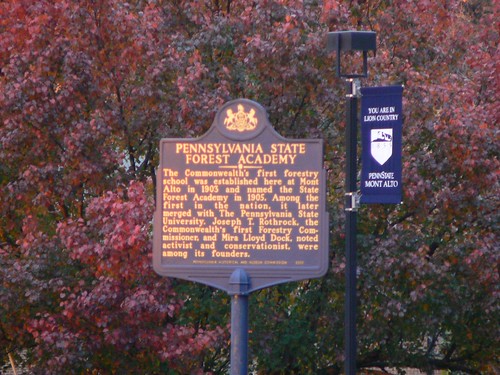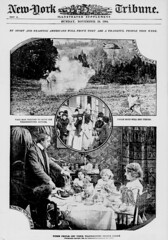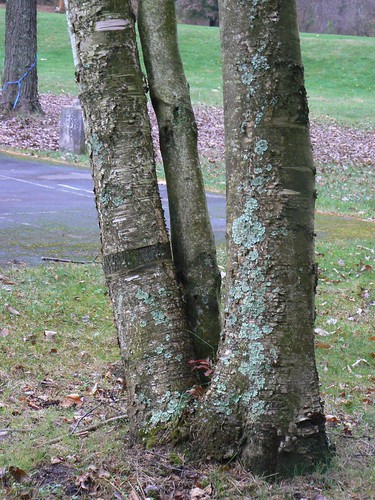Friday, November 27, 2009
Anna Karenina
In the introduction Pevear says that Tolstoy wanted to write a book about domestic life, a book without a lot of action in the plot. He certainly succeeded. Aside from Anna's death there are few outwardly dramatic events. Yet, we really see into the emotional lives of the characters and can identify with them.
For example, I expected to dislike Karenin intensely. Instead I felt very sorry for him. If he weren't such an emotional cripple maybe he could have held on to Anna. When he begins to love Anna's illegitimate daughter I felt he was at his best. It makes him even more pitiable when he later falls under the influence of Princess Irina and loses all possibility of becoming a genuine person.
Levin was a fabulous character. He is so contradictory and torn. He is so hard on himself that he makes his life extremely difficult. It is easy to see how much of himself Tolstoy put into Levin. I liked how in the end Levin decides that he just has to live as much as he can. He decides to perserve through the contradictions of his lack of faith and need to pray when faced with a crisis. That's just how life is.
I will definitely reread this book again, maybe in a year or two.
Sidetracked
By sport and feasting Americans will prove they are a thankful people this week (LOC)
Originally uploaded by The Library of Congress.
Thanksgiving with a social conscience in 1904; hunters, well-off people, and beggars.
Tuesday, November 24, 2009
Moby Dick the Goldfish
One summer (in the mid 1960's?), while we were living on Willow Street, Dad decided he wanted to build a waterfall on the lawn. That house was perched on the side of a hill, with the lawn being a series of terraces with rather steep banks. That lot had no flat ground at all.
The waterfall was designed with a lower reservoir and an upper reservoir connected by a waterway with stones to create rapids. The whole thing was made with concrete. It took a lot of digging. At that age I thought we would never be done! Back then there was no Reddi-mix. We had to mix the concrete on site after hauling the sand, gravel and cement up with the wheelbarrow!
Eventually everything was finished. With the pump plugged in we had a burbling brook at our command. I don’t know what happened to the waterfall when we moved. Maybe we just filled it in with dirt?
Another summer Dad got what must have been a small concrete septic tank that was set into the hillside at the top of the walk to the house. (Dad must have been working at W.E. Cloutier’s at the time.) We painted it pink (a mixture of old paint?). It was big enough to hold a couple of goldfish.
Soon one of the fish got so big we named him Moby Dick. I remember searching the lawn to look for grasshoppers to feed him. He would come right up to the surface of the water, grab his bug and head below to enjoy his meal.
He was pretty tough, too. Once we came home from swimming and found Moby Dick on the grass. We got there in time. He revived soon after being placed back in the water. We never knew if he jumped out or if someone had malevolently taken him out.
Things didn’t turn out well for Moby Dick in the end. He was spending winter in one of the kitchen sinks. Accidentally, Dad spilled some bleach into Moby Dick’s side when he was sterilizing his dentures. The poor fish didn’t last long after that.
Below are some pictures of my current fish facilities.
Monday, November 23, 2009
Blog publish 11/24/2009
Posted from Diigo. The rest of my favorite links are here.
Sunday, November 22, 2009
Vehicle
Tuesday, November 17, 2009
Blog publish 11/18/2009
Everyman Offers New Directions in Online Maps - NYTimes.com
The article highlights the contributions of volunteers to improve and add data to online mapping systems. It also has the web addresses of resources like Open Street Map
Geospatial: Mapping Iraq's Ancient Cities - Articles
This is an interesting article on how the US Army is mapping archaeological sites in Iraq.
Posted from Diigo. The rest of my favorite links are here.
Monday, November 16, 2009
Saturday, November 14, 2009
Golden Light
Originally uploaded by P_Linehan.
Just before sunset the sun descended below the clouds to illuminate everything with this golden light. The photography books always say dawn and dusk are the magic times. Here the trees across the old nursery property at Penn State Mont Alto are illuminated with the summit of Mont Alto in the background.

The historical markers glow in the last light.

Tuesday, November 10, 2009
Blog publish 11/11/2009
GEOSTATIONARY SATELLITE SERVER
The summary page for geostationary weather satellites. Shows infrared, visible light and water vapor for different regions of the USA. This is where all the weather reports get their images.
Posted from Diigo. The rest of my favorite links are here.
Thursday, November 05, 2009
Blog publish 11/06/2009
NASA - Antarctic Airborne Science Mission Nears Mid-Point - Annotated
- "We flew a snow radar from the
University of Kansas that is designed to measure the snow depth on sea ice and the laser Airborne Topographic Mapper from NASA's Wallops Flight Facility to measure the sea surface and the height of the combined snow/ice layer above the sea.- - post by p_linehan
- laser-based topographic instrument -- the Land, Vegetation, and Ice Sensor (LVIS) -- scientists hope to improve the accuracy of the ICESat data record and prepare to extend these critical ice surface change observations into the future.
- - post by p_linehan
Posted from Diigo. The rest of my favorite links are here.
Monday, November 02, 2009
Changes in the Forest

Today I hiked out on Bricker Trail in the Michaux Forest near campus with a class learning how to use GPS.
The Penn National development is continuing its expansion along the forest boundary, although it is slower now because of the economic downturn.
 There are many vacant lots ready along the roads. The new homeowners are getting a fabulous view of the hills behind them and great access to hiking trails in the forest.
There are many vacant lots ready along the roads. The new homeowners are getting a fabulous view of the hills behind them and great access to hiking trails in the forest.However, it will change the character of the forest. No one wants to see a timber harvesting operation behind their home. And hunters will be forced back from the forest boundary as the homes are built. I guess that's progress?


Sunday, November 01, 2009
Unexpected Sitar
 Last night we went to a Halloween party. The host, Jim, makes instruments (guitars, harps, dulcimers, etc.) from wood. Usually there is a mini-jam session after dinner. The music varies from year to year depending on the guests. Last night I was surprised to hear a sitar, the Indian lute. Jeff, the person who brought it, has been studying for over a year. So far he has learned two songs, I think, from the repertoir. The instrument has so many sounds and nuances that it's like an orchestra all to itself.
Last night we went to a Halloween party. The host, Jim, makes instruments (guitars, harps, dulcimers, etc.) from wood. Usually there is a mini-jam session after dinner. The music varies from year to year depending on the guests. Last night I was surprised to hear a sitar, the Indian lute. Jeff, the person who brought it, has been studying for over a year. So far he has learned two songs, I think, from the repertoir. The instrument has so many sounds and nuances that it's like an orchestra all to itself.Wikipedia describes how the sitar is able to produce the sounds and overtones:
The sitar's curved frets are movable, allowing fine tuning, and raised so that sympathetic strings (tarbs, also known as "tarif" or "tarifdar") can run underneath them. A sitar can have 21, 22 or 23 strings, among them six or seven played strings which run over the frets: the Gandhar-pancham sitar (used by Vilayat Khan and his disciples) has six playable strings, whereas the Kharaj-pancham sitar, used in the Maihaar gharana (Ravi Shankar), has seven. Three of these (or four on a Kharaj-pancham sitar), called the chikari, simply provide a drone: the rest are used to play the melody, though the first string (baj tar) is most used.
The instrument has two bridges; the large bridge (bada goraj) for the playing and drone strings and the small bridge (chota goraj) for the sympathetic strings. Its timbre results from the way the strings interact with the wide, sloping bridge. As a string reverberates its length changes slightly as its edge touches the bridge, promoting the creation of overtones and giving the sound its distinctive, tone. The maintenance of this specific tone by shaping the bridge is called jawari. Many musicians rely on instrument makers to adjust this.
We only heard it played for a few enchanting minutes. I am tempted to look up music from Ravi Shankar and find music from other masters. Would it be enjoyable to listen to for a whole CD?






